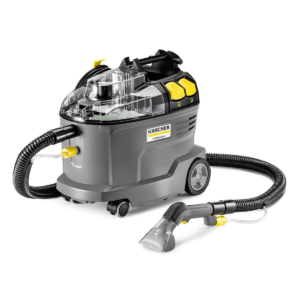Roofing maintenance is vital to protect the contents of your home and extend its lifespan. In addition, a well-maintained roof contributes to effective insulation and minimizes energy costs.

A regular maintenance schedule should include roof cleaning to prevent buildup, mold growth, and clogged drains. It should also include inspections for damage and leaks.
Flashing is the sheet metal fabricated into a specific shape that prevents water from penetrating the roof system at seams (around chimneys, dormers, and corners). It’s important to inspect the flashing regularly so that moisture doesn’t seep into the house. Flashing is usually made of aluminum, which is a good choice for roofs because it doesn’t rust as easily as steel. Flashing should be replaced when it becomes severely corroded.
Flashing should be sealed with caulking, which should also be inspected for cracks, pitted spots, and missing beads. When caulk is worn down or cracked, moisture can enter the flashing, causing rot and damage to the roof system.
Another flashing maintenance concern is that roof penetrations such as skylights, vents, and pipes are properly sized and secured. If the vent pipe is larger than the flashing collar, a leak will occur as water seeps through the unprotected roof membrane. Likewise, a small opening in the flashing collar can wear out quickly if it slides over a larger vent pipe, creating a fatigue failure in the flashing.
Often, when roofers install flashing or make repairs, they use roofing tar instead of the recommended caulking. Roofing tar can be more convenient for roofers, but it will dry out and crack over time. These cracks are easy to miss and will allow moisture to seep into the roof, causing rot and water infiltration.
Other signs that flashing is leaking or damaged include water stains inside the house, and mold or dampness in the attic. If you notice any of these issues, contact New View Roofing to schedule a roof inspection and address the issue promptly.
Other areas of the roof that require special attention are valleys and eaves. These areas are especially prone to leaks as they gather large amounts of rainwater. Flashing in these areas is typically long pieces of sheet metal shaped to fit into the valley, and shingles on both slopes overlap the edges of the flashing for a tight seal. Flashing in valleys should be inspected for rust, caulking, and other failures. Also, check the flashing around dormers and eaves for loose or missing shingles.
Inspect the Gutters
The gutter system plays a crucial role in the drainage of your roof. A gutter that isn’t functioning properly can cause serious problems for your home. It’s important to inspect and clean your gutter system regularly. During this inspection, you’ll look for external damage like rust, dents, or broken sections. You’ll also check that your gutters have the right slope to drain water properly. If your gutters sag, water won’t flow away from the home and could cause rot or foundation issues.
It’s essential to inspect your gutter system from the ground before climbing a ladder. A good rule of thumb is that your gutters should slope half an inch for every 10 feet of gutter. If your gutters aren’t sloping adequately, you should adjust the pitch to prevent water from pooling in the gutters or downspouts. You’ll also want to take this opportunity to clean the gutters and downspouts.
While you’re on the ladder, use a gutter scoop to remove leaves and other major debris from your gutters. This is an easy way to keep your gutters clog-free. It’s best to do this in the spring or fall, when leaves tend to fall from nearby trees more frequently.
When examining your gutters, make sure to check downspouts, conductor heads, leaders, and roof drains for signs of clogs or blockages. Check for a buildup of biological material, such as moss or lichen, which excretes corrosive acids that can damage your gutters.
You’ll also examine the condition of any penetration seals on the roof, such as those used for vent pipes, roof vents, and media installations. The condition of these penetration seals can have a significant impact on the condition of your roof and should be checked at least twice a year.
If you’re unsure about your ability to safely inspect your roof and gutters, consider hiring a professional roofing contractor. They can do a more thorough inspection of your roof than you would on your own and will be able to spot potential issues before they become worse. They can also provide you with recommendations for the next steps, whether it’s repairing or replacing your roof or simply cleaning the gutters.
Inspect the Interior of Your Home
A home inspector will start with the exterior and move indoors to ensure that nothing is missed. Roofing inspections are more than just looking for signs of damage or leakage, they also look for potential safety hazards. Those hazards include things like falling shingles and broken gutters, and they could lead to a wide range of problems for the rest of the house. In addition to inspecting the roof itself, a professional will look at all the large accessories that attach to it, including chimneys, vents and skylights. They will also examine the foundation of the building, as well as its walkways and driveways.
Chimneys should be inspected for cracking bricks and creosote build-up, while vents, skylights and chimney flashing should be inspected for rust and corrosion. A thorough examination should also be done of the attic to make sure there is adequate ventilation and that it is free of mold, fungus, or rot.
Gutters and downspouts should be cleaned regularly to avoid blockages that can cause water buildup on the roof surfaces, causing rot or decay. Fallen tree limbs should also be cleared before they become too big to handle and cause damage to the roof structure. Inspect for sagging as this is an early sign of a weak roof that will need to be replaced soon.
Safety is another key consideration, and it will be important for the roofer to check that all of the ladders, stairs and platforms used to reach the roof are safe to use. They will look for any loose or damaged components, and they will make sure that all the safety signs are legible and in good condition.
When performing a maintenance inspection, the roofer will go over the notes of all previous repairs and check to see if any additional work is needed. If there are any issues that require immediate attention, the roofer will address them right away. This will prevent the minor problems from turning into more serious issues in the future. In addition, keeping accurate records of repairs will help in insurance claims or sale situations.
Trim Trees
Trees can add beauty and value to your home, but they also need to be properly maintained. Overgrown trees can damage your roof, causing leaks and other problems. You can help to prevent this by regularly trimming the tree branches that extend over your roof.
If you do not have a professional tree trimmer, it is recommended that you call one to perform this task. The reason for this is that pruning a tree can be very dangerous, especially when it involves cutting limbs that are too high. In addition, there are specific tools that are needed to complete the job safely and correctly.
It is possible to remove overhanging branches on your own, but you should be aware of the risks involved and take steps to protect yourself. For example, if you are climbing a ladder to cut a branch that is too close to your house, it could fall and cause significant damage. You can also injure yourself by falling off the ladder.
Branches that hang over your roof can also damage it. They can scrape against the surface, which can strip the granules from the shingles and expose the layers underneath. This can lead to water intrusion and additional roof repairs or even a full roof replacement.
In addition, hanging limbs can clog your gutters. This can cause the water to overflow and damage your walls and foundation, or it may rot the siding on your house. In addition, pests and animals can gain access to your home through the branches that hang over the roof. For example, raccoons and squirrels can use the branches to climb right into your attic.
To avoid damage to your roof and other areas of your home, you should have any overhanging branches trimmed by a professional. A professional will know how far a tree should be from your house and will also be able to spot potential issues with the health of the trees. You should also talk to your local arborists about the species of trees that are in your yard and what their growth schedule is.








